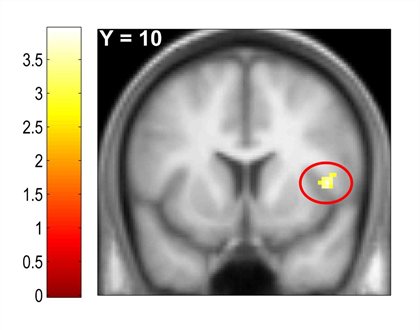Utopian lab: Illusions – A window to your brain
Perception was the result of interaction between sensory signals (bottom-up processing), and models stored in memory (top-down processing). A crucial balance between predictions and prior knowledge has to be maintained in order to make sense of the environment around us.
A window to your brain used the ‘hollow-mask illusion’ to investigate the interaction between top-down and bottom-up processing. The hollow mask illusion occurs when a hollow mask is erroneously perceived as a normal convex face. Illusions are a useful tool for studying the impact of previous knowledge and contextual information on perception, because what is perceived is substantially different from the real sensory input.
Schizophrenia impacts on perception by creating an imbalance between top-down and bottom-up processes. This becomes more manifest when the thing being perceived is ambiguous, like an illusion. People with conditions such as schizophrenia are not fooled by the hollow-mask illusion and Dr Danai Dima’s research hypothesizes that this is because patients suffering from schizophrenia rely more on stimulus-driven processing than on top-down processing (memory).
Cross-media installation A window to your brain invited the visitor to test their own eyes and brains, and presents pioneering research that is shedding light on the way that the brain works and forging new approaches to diagnosis and care.
Project lead
Dr Danai Dima is a Senior Research Fellow at the Department of Neuroimaging, King's College London and a Lecturer in Cognitive Neuroscience at City University London. The focus of her work has been on cognition and brain structure, activity and connectivity in healthy individuals and psychosis in combination with genetics.
Dr Shelley James trained in textiles at the Ecole Nationale Superieure des Arts Decoratifs in Paris and pursued a career in corporate design for international clients including Visa International, Shell and Habitat. Deciding to explore the themes of perception and reality from a more personal perspective, she studied printmaking at the University of the West of England, where she developed new techniques for encapsulating prints in glass with support from the National Glass Centre in Sunderland and Arts Council England. An ongoing Residency with the Bristol Eye Hospital and her PhD research at the Royal College of Art in London has led to a number of collaborative projects with scientists, exploring the intersection between material and virtual space.
Utopian lab

This project was part of the Utopian lab, a contemporary glimpse of the Health Faculties at King’s College London. The crusade to understand, save and compliment the human body and mind was the spirit of Utopia itself, uniting cultures, defining humanity and standing on the shoulders of giants.
Rotating through the different stories of present day work day work being carried out across the Health Faculties at King’s College London, Utopian lab was a snapshot of the future with roots firmly planted in King’s College Hospital’s past: a workhouse on the Strand that was propelled to notoriety by the surgery work of Joseph Lister in the late 19th century.
‘I think one’s feelings waste themselves in words, they ought all to be distilled into actions and into actions which bring results’ – Florence Nightingale